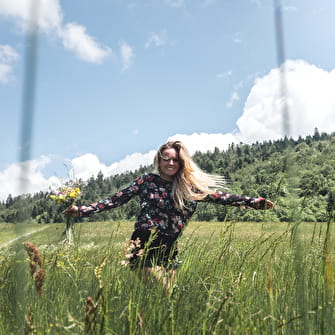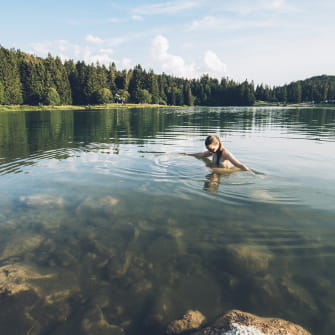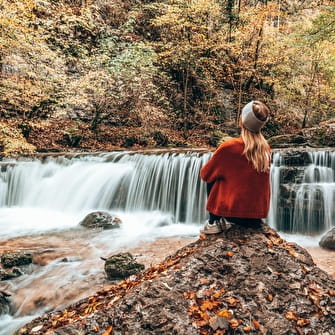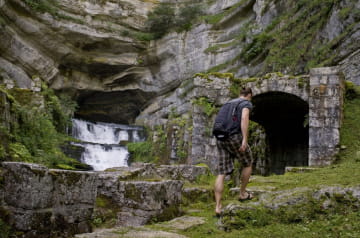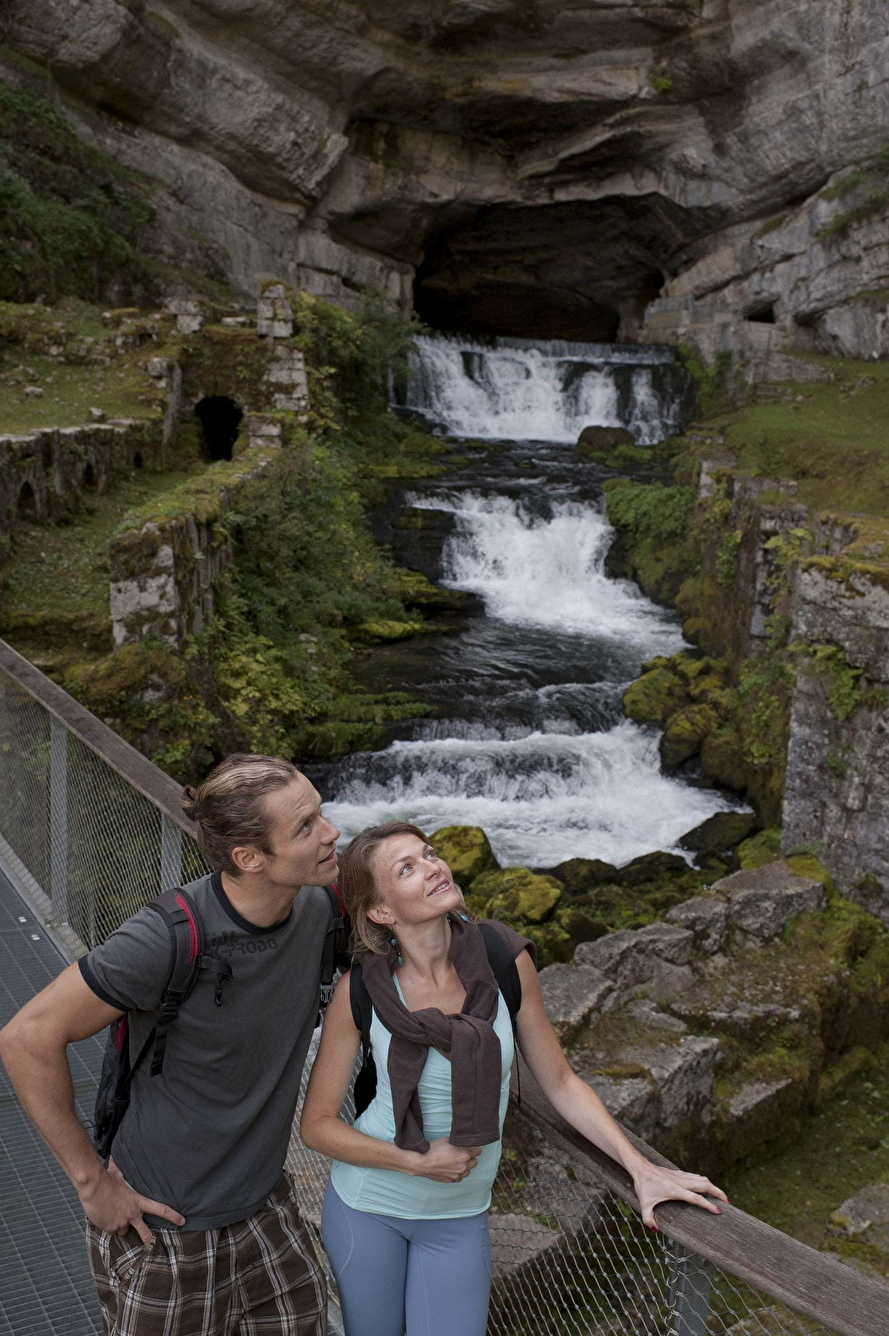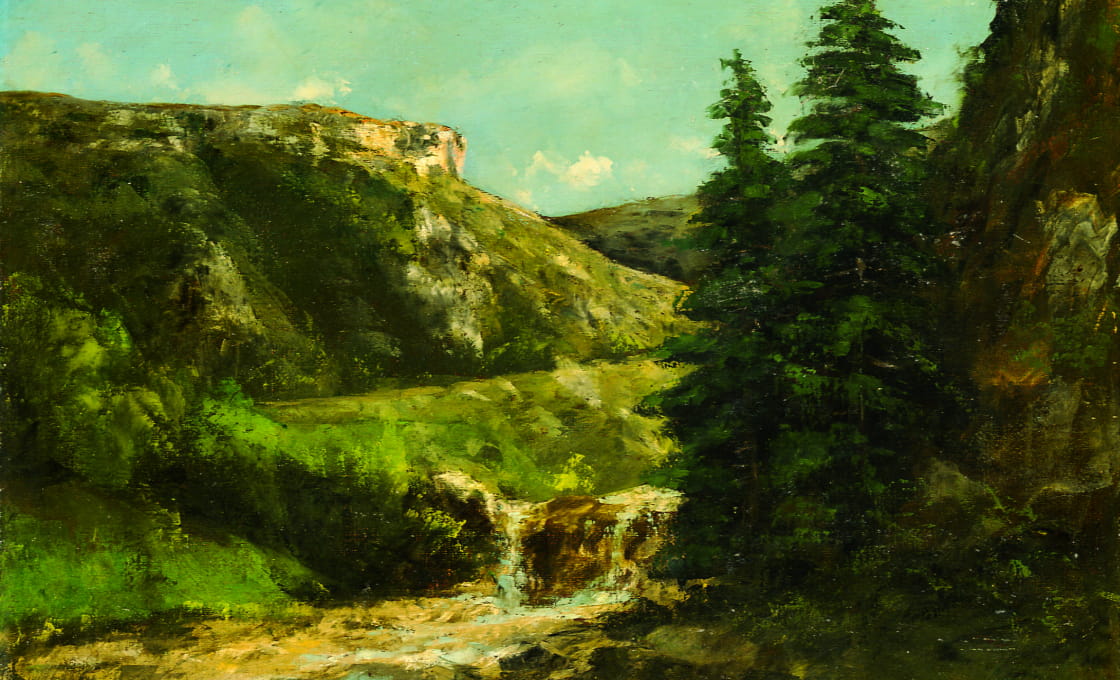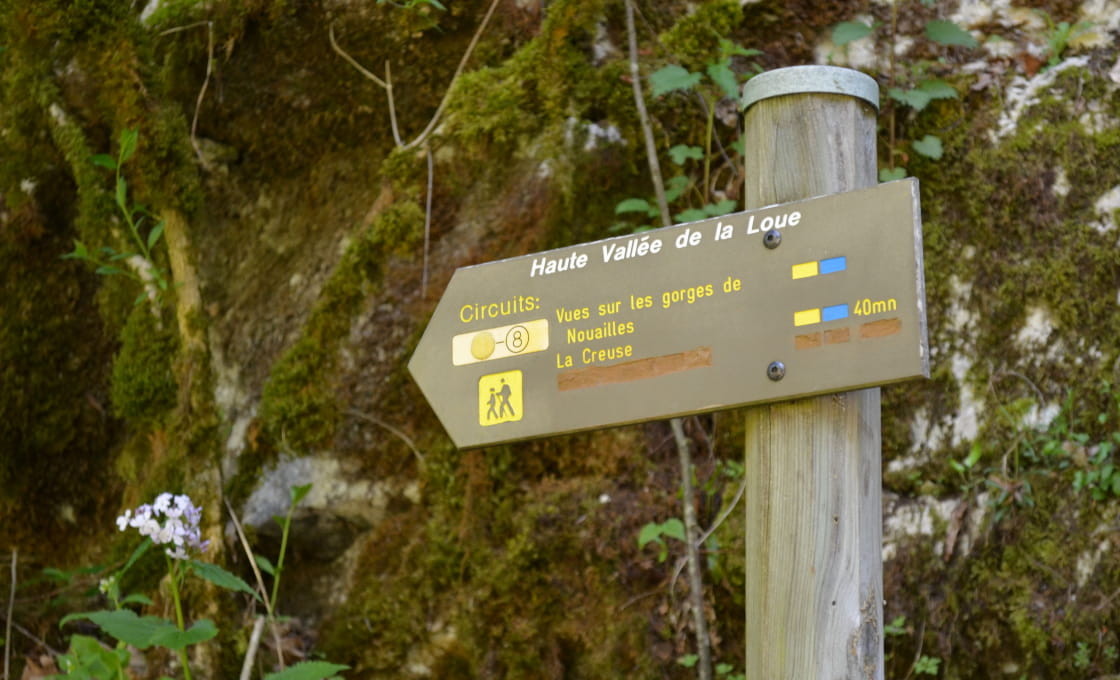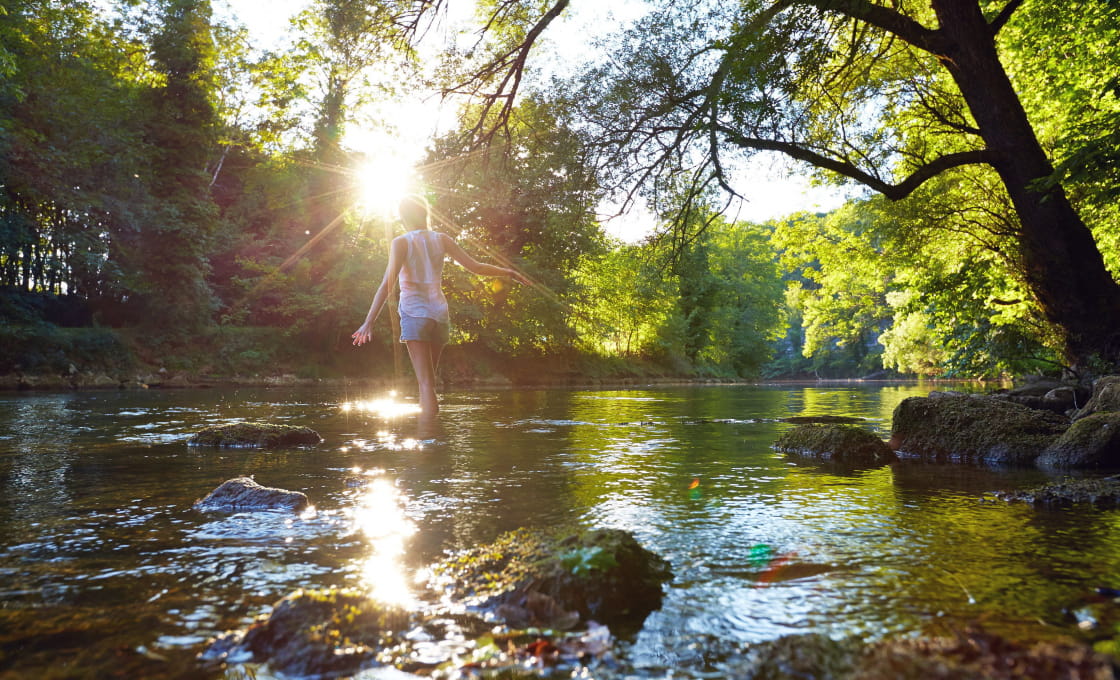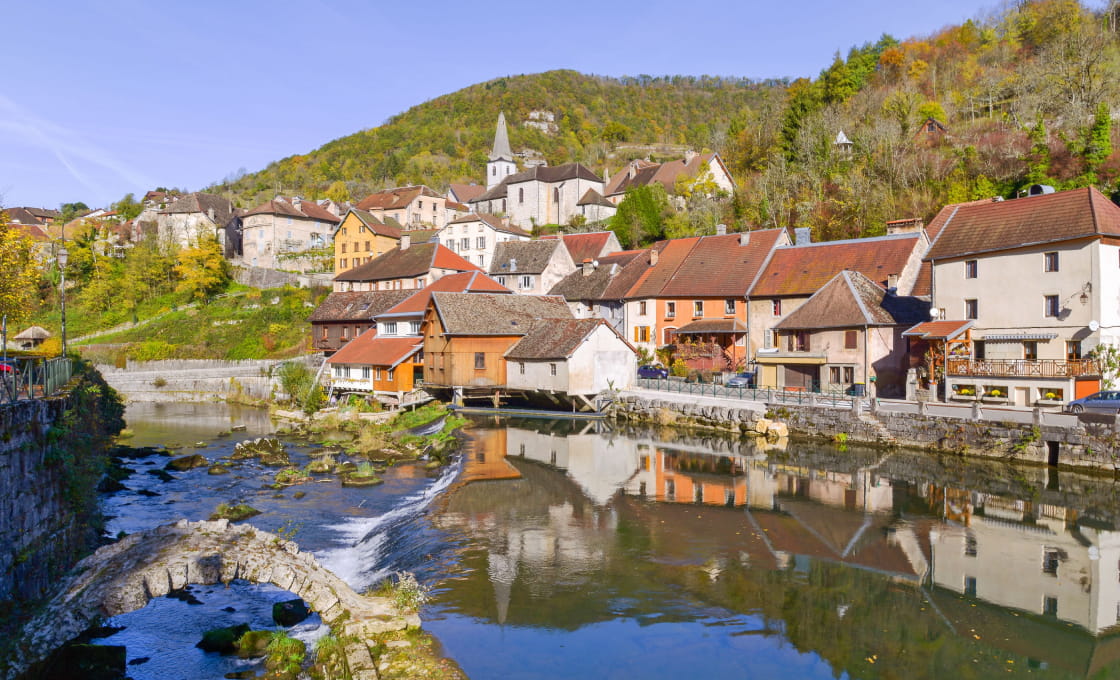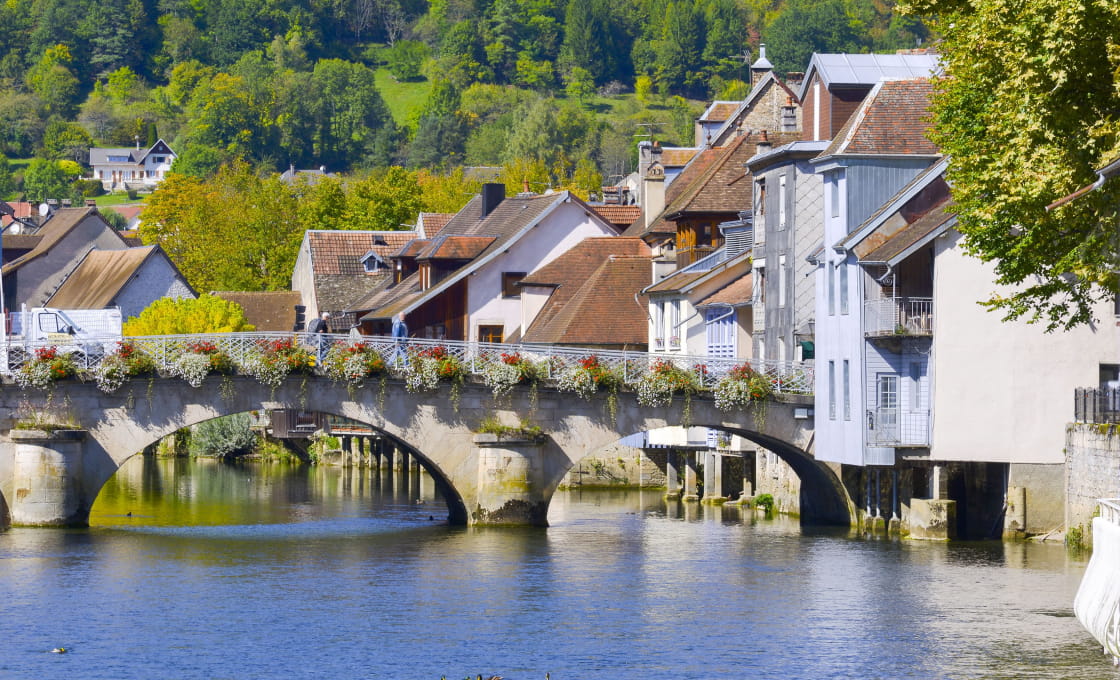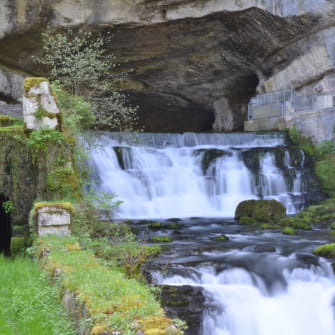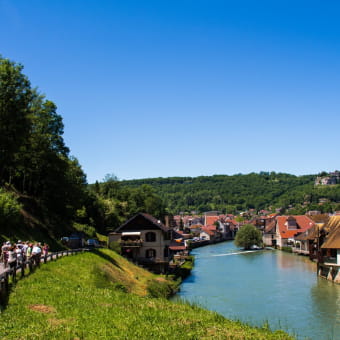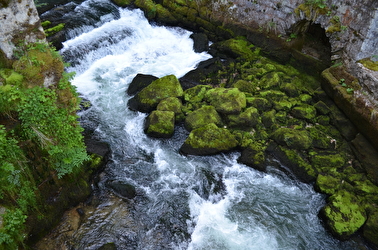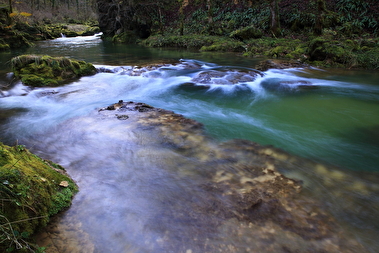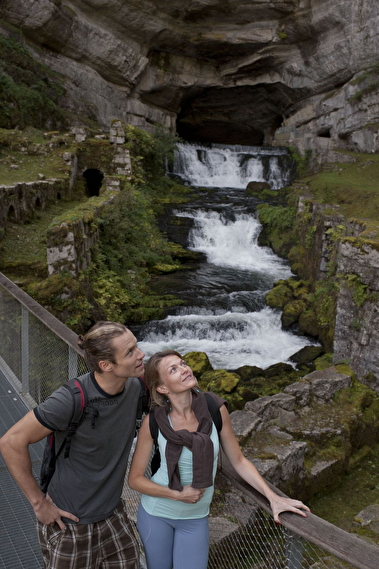The river springs forth, rumbling beneath an enormous arch formed by an impressive rocky mass. The waterfall tumbles from rock to rock down its rugged course. What makes this spectacle so special is that it torments all of the senses by some strange deluge of emotion.
Source of the River Loue, a spectacular sight to be discovered on foot
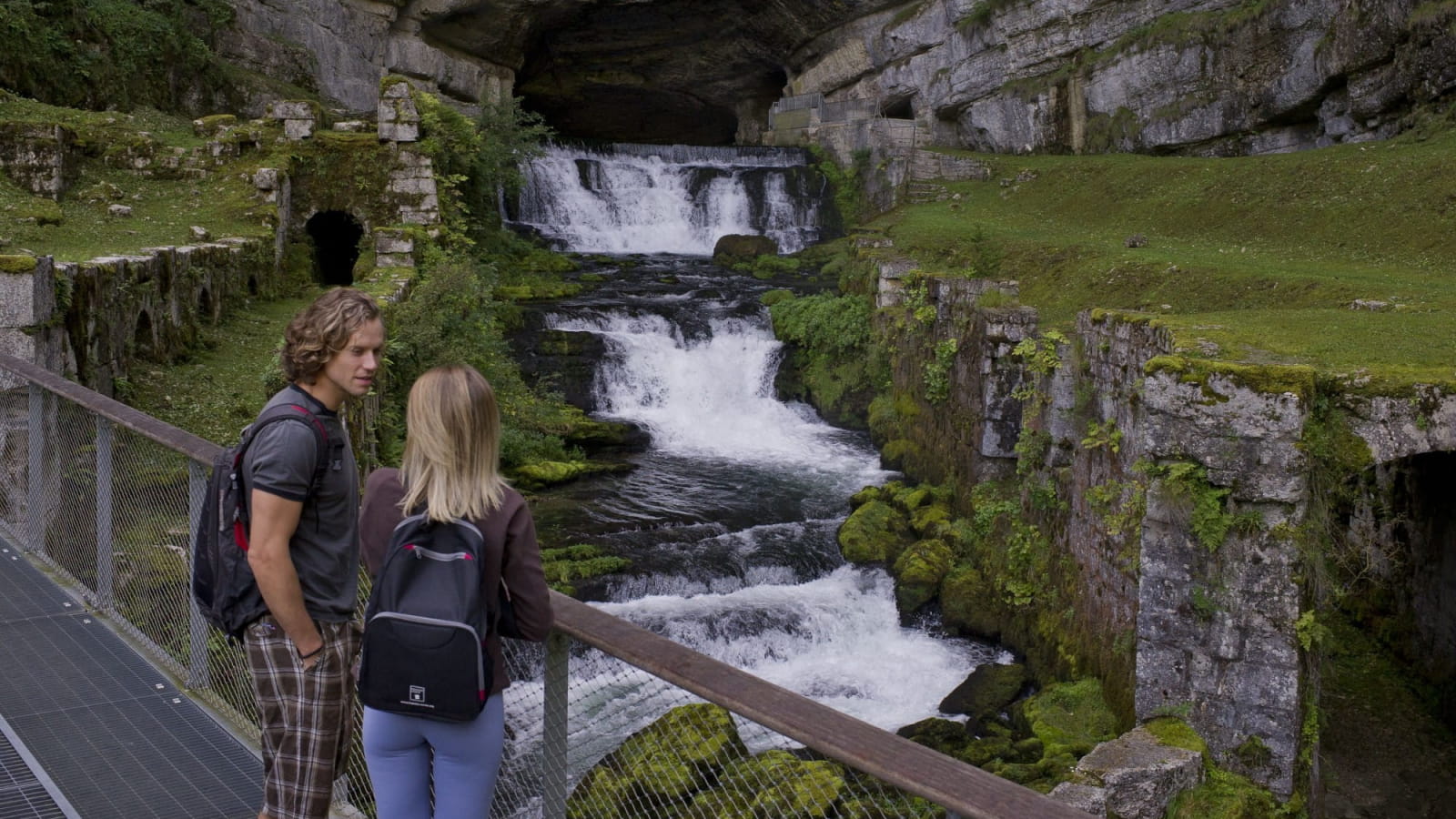
The source of the River Loue emerges from a cave carved into a rocky corrie. It is a stunning sight that can be enjoyed after an easy walk. Nature lovers can continue exploring along the many footpaths and GR hiking trails in the area, while art enthusiasts can follow in the footsteps of the illustrious Gustave Courbet on one of the "Courbet trails"! This escape wouldn't be complete without a little detour via the Loue valley. As bucolic as they come!
A stunning natural spectacle shrouded in mystery
Welcome to the source of the Loue, a plant and mineral landscape at the edges of the earth where water spurts from the depths of a dark cave.
Looking at this 150m-high cliff, you get a real sense of something mysterious happening. You'll be amazed by the massive power of the natural elements before you.
Your gaze is captured by the water and rock which awaken local legends such as that of the wyvern, a woman wearing a precious stone on her forehead and who can change herself into a snake. Indeed, according to regional folklore, she spends her time wandering between sources and springs.
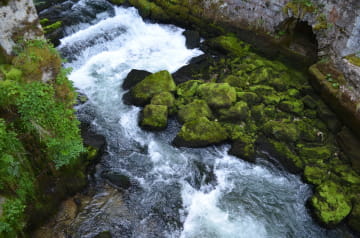
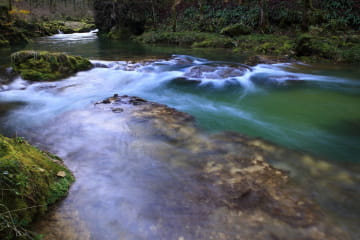
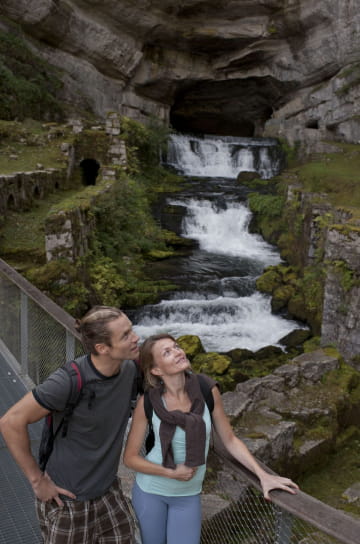
Extract from "Picturesque Journeys"
Walking and hiking
- Hiking trails in the vicinity of the source
To discover the source of the River Loue, walking is the only solution. There's a narrow footpath accessible to walkers only, which takes you to the source in 10 minutes.
For those whose legs are itching to explore deeper into this natural environment
You have a number of hiking trails to choose from:
- For a meditative walk, follow the short loop trail (5 or 6km).
- If you're feeling energetic, take the more challenging route (13.5km) which passes several panoramic viewpoints. This is one of the "Courbet trails".
- The Courbet trails
Between them, these 4 itineraries link up various sites that were visited and/or painted by local artist Gustave Courbet. A chance to admire the scenery through the eyes of this world-famous 19th-century painter whose region of birth was brought to fame by his artworks displayed in the best museums across the planet.
When the River Loue tasted of absinthe
In August 1901, fire broke out in the Pernot factory of Pontarlier! And what was made at this factory?
Absinthe! In the panic, hundreds of litres of the spirit were poured into the River Doubs to avoid an explosion of the vats!
Two days later, the River Loue took on a strange green colour and the smell and taste of aniseed... It didn't take long to establish the link and discover that the Loue is in fact a resurgence of the Doubs. Indeed, just downstream from Pontarlier, part of the River Doubs disappears into a fault and re-emerges a few kilometres away as the River Loue.
Escape to the beautiful Loue Valley
Once you've seen where the Loue begins, you'll probably want to follow it. Great idea, because the Loue Valley is an invitation to enjoy a bucolic walk along the riverbank, between country lanes, rolling landscapes and villages tucked beneath steep rock faces. You'll end up in the charming town of Ornans where the famous painter, Gustave Courbet, was born.
A natural site that absolutely has to be seen, just an hour away from Besançon
Our holiday suggestions
For your hiking or cycling holiday, or a cultural trip on the theme of Gustave Courbet, check out our turnkey packages in the region around Ornans and the source of the River Loue.



